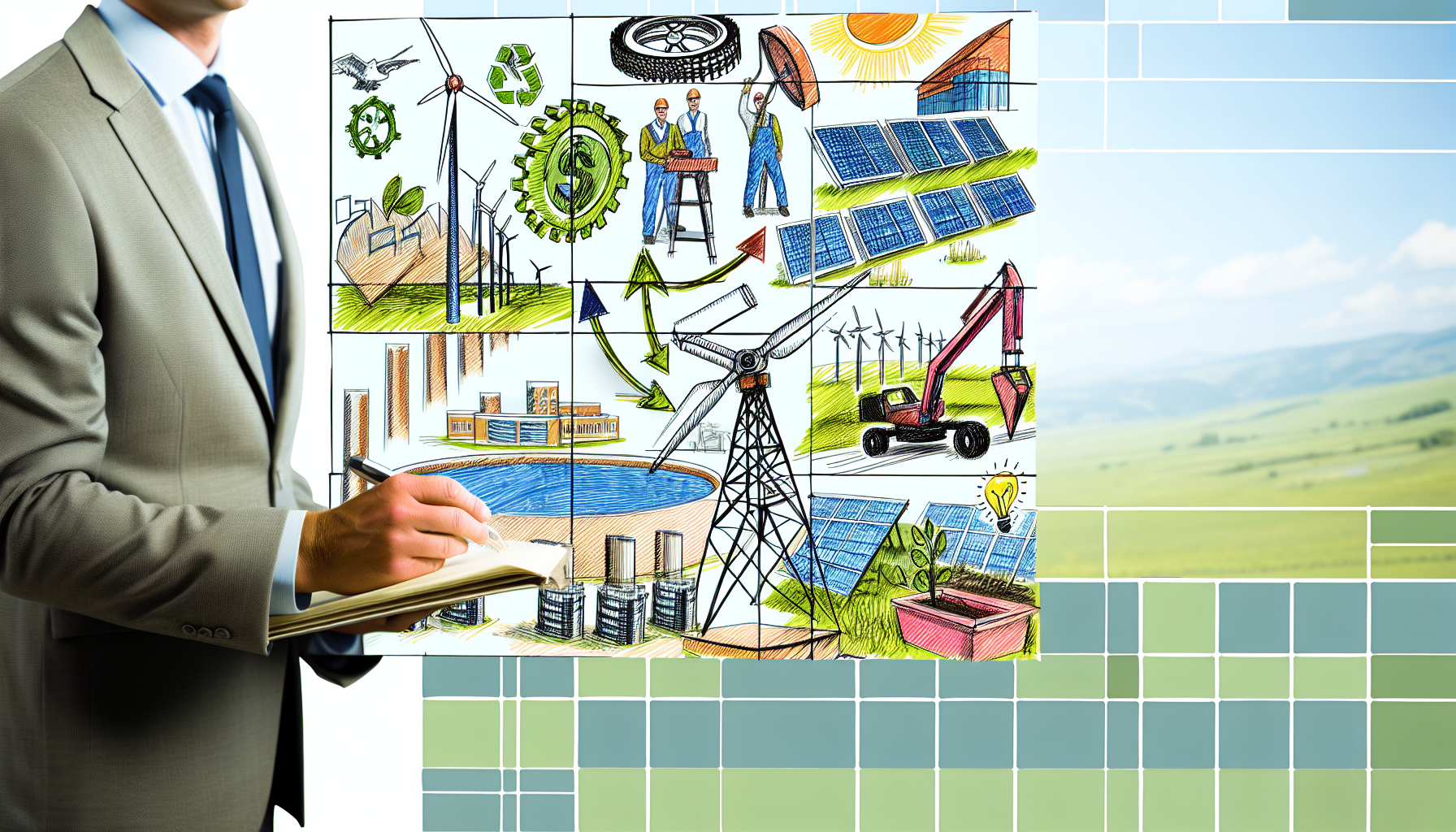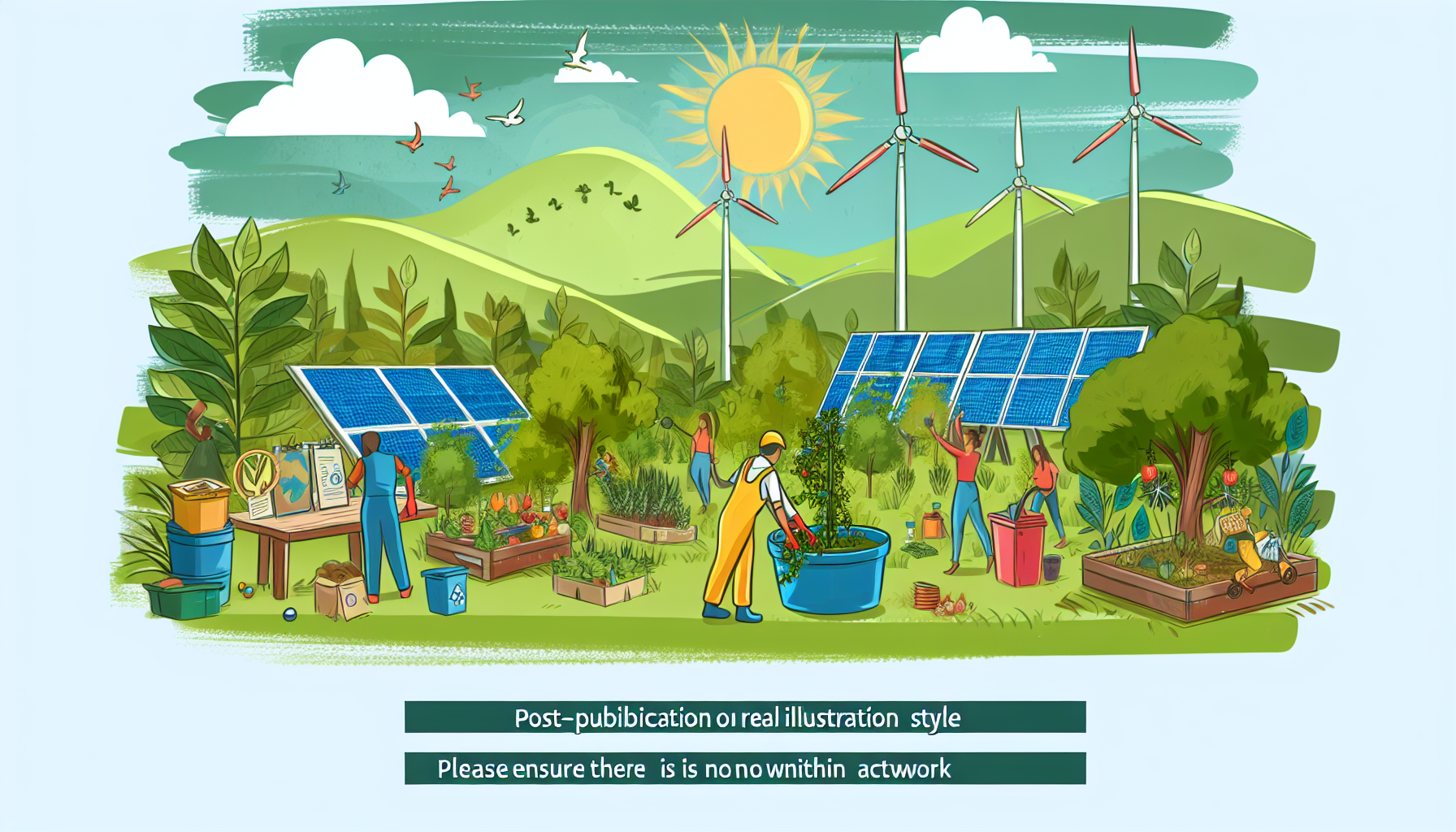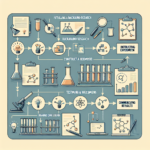
Engineering projects inherently interface with the environment, often resulting in significant impacts that warrant comprehensive evaluation. The relationship between engineering and environmental sustainability has gained increased attention in recent years, compelling engineers to adopt practices that mitigate adverse effects while promoting ecological health. As global challenges such as climate change, resource depletion, and habitat destruction escalate, it becomes essential for engineers to consider sustainability in their work. This multifaceted approach not only aligns with regulatory standards but also caters to growing public concerns regarding environmental stewardship.
The integration of sustainability considerations in engineering involves employing strategies aimed at minimizing negative environmental repercussions. Engineers have the responsibility of assessing potential impacts throughout a project’s life cycle, from design and construction to operation and decommissioning. By utilizing sustainable materials, optimizing energy use, and incorporating waste-reducing technologies, engineers can actively contribute to a decreasing ecological footprint. Moreover, the adaptation of techniques such as lifecycle assessment (LCA) allows for informed decision-making that prioritizes environmental integrity.
In addition to individual efforts, collaborative frameworks involving stakeholders, regulatory bodies, and communities can further enhance sustainability in engineering practices. Engineers are increasingly called upon to engage in public dialogue and consider the social implications of their projects, helping ensure that development is not only economically viable but also ecologically sound. This holistic approach serves to create a broader understanding of sustainability as it relates to engineering, as well as reinforcing the notion that every engineering decision holds potential consequences for the environment.
As we navigate into an era that demands greater consciousness toward environmental preservation, engineering professionals are at the forefront of driving change. By prioritizing sustainability within their projects, they foster innovative solutions that could prove pivotal in addressing pressing environmental challenges.

Sustainability in engineering projects refers to the practice of designing and executing initiatives that meet the needs of the present without compromising the ability of future generations to meet their own needs. This concept is grounded in the principles of sustainable development, which encompass three key pillars: environmental protection, resource conservation, and social responsibility. Understanding these principles is essential for engineers who aim to minimize the negative impacts of their projects on the environment while promoting societal well-being.
Environmental protection involves implementing measures that reduce harmful effects on ecosystems. Engineers must consider the potential environmental impacts of their projects from the outset, performing thorough assessments that address issues such as habitat destruction, pollution, and biodiversity loss. By integrating environmental factors into project planning, engineers can develop innovative solutions that preserve natural resources and safeguard ecosystems. This proactive approach not only fulfills legal obligations but also fosters public trust and enhances the project’s long-term viability.
Resource conservation emphasizes the efficient use of materials and energy throughout an engineering project. This includes selecting sustainable materials, reducing waste, and prioritizing renewable energy sources where feasible. For example, using recycled materials can lower the demand for virgin resources and diminish the overall environmental footprint of a project. Engineers are increasingly harnessing technologies such as energy-efficient systems and sustainable construction practices to minimize resource consumption and support the transition to a circular economy.
Social responsibility entails considering the socio-economic impacts of engineering projects on communities. This involves engaging with stakeholders, including local populations, to address their concerns and contributions. By fostering inclusivity and transparency, engineers can ensure that projects not only serve technical objectives but also enhance community well-being, thereby promoting overall sustainability.
The global population has been experiencing unprecedented growth, leading to a myriad of environmental challenges that necessitate urgent attention from engineers and policymakers. As the number of individuals on the planet continues to rise, the demand for natural resources, including water, energy, and raw materials, intensifies. This escalation in consumption significantly contributes to environmental pollution, habitat destruction, and degradation of ecosystems.
Research has consistently shown a correlation between population density and environmental degradation. Urban areas, which often exhibit high population concentrations, suffer from air and water pollution due to increased industrial activities and waste production. Consequently, these environmental strains pose significant health risks to populations living in densely populated areas. Essays that explore this linkage emphasize that as cities expand, the ability to manage waste and emissions often lags behind, exacerbating pollution levels and straining public health systems.
Moreover, population growth can lead to overexploitation of natural resources, which poses significant risks to biodiversity and ecosystems. For instance, deforestation to accommodate expanding urban landscapes or agriculture can result in loss of habitat for numerous species. Engineers must recognize these ecological impacts when designing infrastructure; sustainable practices must be integrated to ensure minimal disruption to the natural environment. Innovative engineering solutions, such as green building designs, water-efficient technologies, and sustainable waste management systems, are critical in addressing the challenges posed by population growth.
The urgency of developing sustainable engineering projects that consider population dynamics cannot be overstated. Only through a collaborative approach that involves engineers, environmental scientists, and public stakeholders can we create effective strategies to mitigate the negative effects of population growth on the environment.

Inadequate environmental sanitation poses significant threats to public health and ecosystems. Poor sanitation systems can lead to the contamination of water sources, resulting in the spread of diseases such as cholera, dysentery, and typhoid fever. These health crises stem from untreated sewage entering water bodies, illustrating the direct correlation between environmental sanitation and public health outcomes. For instance, the 2010 cholera outbreak in Haiti, which affected over 600,000 people, was largely attributed to the inadequate management of waste and poor drinking water quality, emphasizing the urgent need for improvements in sanitation practices.
Additionally, the ecological ramifications of insufficient sanitation are profound. Contaminated water can disrupt aquatic ecosystems, harm wildlife, and degrade biodiversity. The introduction of pollutants into natural habitats can compromise species survival and lead to the bioaccumulation of toxins within the food chain, indirectly affecting human populations that rely on these ecosystems for sustenance. A report from the World Health Organization highlights that almost 80% of all diseases in developing countries are caused by unsafe water and poor sanitation, highlighting the critical need for effective environmental sanitation measures.
Engineers and project managers play a crucial role in addressing these sanitation challenges. By incorporating sustainable practices into engineering designs, such as using eco-friendly materials and advanced waste treatment technologies, they can significantly enhance environmental sanitation outcomes. Furthermore, civil engineering initiatives that focus on effective drainage systems can prevent flooding and direct pollution away from natural water bodies. Implementing community-based sanitation projects can also empower local populations, ensuring that effective sanitation solutions are accessible and culturally appropriate. Ultimately, the integration of sustainable practices into engineering is essential for promoting both public health and environmental integrity.
Engineering projects, while essential for societal development and infrastructure growth, often lead to significant environmental pollution. These projects can generate various forms of pollution—most notably air, water, and soil contamination—during both construction and operational phases. Understanding the mechanisms behind these issues is essential for developing effective prevention measures aimed at preserving environmental integrity.
Air pollution is a critical concern linked to engineering activities, primarily due to emissions from construction equipment and machinery. Dust from construction sites and the release of volatile organic compounds (VOCs) can degrade air quality, posing health risks to workers and surrounding communities. Additionally, the burning of fossil fuels to power machinery contributes to greenhouse gas emissions, exacerbating climate change. Implementing strategies such as using electric machinery and maintaining dust suppression techniques can mitigate these harmful effects.
Water pollution is another significant impact of engineering projects, often resulting from the runoff of contaminants, including oils, chemicals, and sediments, into nearby water bodies. This pollution occurs particularly during the construction phase when land is disturbed and drainage patterns altered. Furthermore, improper waste disposal and leaks from storage facilities can introduce harmful substances into groundwater sources. Monitoring water quality and adopting practices to minimize runoff, such as silt fences and retention basins, are crucial for preventing water pollution.
Lastly, soil pollution frequently occurs due to the disposal of hazardous materials and improper handling of construction debris. The introduction of heavy metals and chemical contaminants into soil can lead to land degradation and compromise local ecosystems. Preventative measures, such as designing waste management systems that prioritize recycling and the safe disposal of hazardous materials, are vital to address this issue. Overall, recognizing and managing these pollution forms is critical for sustainable engineering practices.

Examining case studies from the ‘Journal of Civil Engineering and Environmental Sciences’ and the ‘Applied Journal of Environmental Engineering Science’ reveals several notable engineering projects that exemplify sustainable practices. These examples showcase innovative strategies in design and implementation, demonstrating substantial environmental benefits while addressing modern engineering challenges.
One prominent example is the High Line project in New York City, which transformed an abandoned elevated railway into a lush urban park. This project prioritized ecological restoration and community engagement, incorporating various native plant species to support local biodiversity. The result was not only a revitalized green space contributing to the urban ecosystem but also a decrease in the urban heat island effect. This park has become a model for similar urban redevelopment projects across the globe, emphasizing the importance of integrating ecological sustainability into urban planning.
Another compelling case is the construction of the Bosco Verticale in Milan, Italy. This residential complex features vertical forests, where vegetation is integrated into the building’s façade. By incorporating trees and shrubs, the project significantly reduces energy consumption through natural insulation. Furthermore, it plays a crucial role in improving air quality and promoting biodiversity in urban environments. The Bosco Verticale is a testament to how engineering solutions can address environmental concerns while enhancing the aesthetic appeal of modern architecture.
Additionally, the Water Treatment Plant in San Francisco exemplifies sustainable engineering through the use of advanced technologies aimed at water conservation and energy efficiency. The facility employs a closed-loop system that minimizes wastewater and maximizes the recovery of resources. This innovative approach mitigates the environmental impact typically associated with water treatment processes, demonstrating that sustainable engineering practices can lead to both operational efficiency and significant ecological preservation.
These case studies illustrate that the integration of sustainability considerations in engineering projects is not only feasible but also essential for fostering healthier environments. By employing innovative designs and strategies, these projects contribute positively to the ecological landscape and serve as benchmarks for future initiatives in sustainable engineering.
Integrating sustainability into engineering projects is essential for minimizing environmental impact while enhancing project efficiency. Here are several practical strategies for professionals to effectively embed sustainability within their projects.
Firstly, the selection of sustainable materials plays a pivotal role. Engineers should prioritize the use of renewable and recycled materials wherever possible. This not only reduces resource depletion but also decreases overall energy consumption in production. Implementing life cycle assessments can help in evaluating the environmental impacts associated with material choices, allowing engineers to make more informed decisions.
Secondly, embracing green technologies is crucial for advancing sustainability in engineering practices. For instance, utilizing energy-efficient systems, such as energy-efficient HVAC systems or solar panel installations, can significantly lower energy consumption. Additionally, adopting smart technologies and automation can optimize resource usage in real-time, leading to waste reduction and improved environmental performance.
Collaboration with environmental experts should also be a priority in any engineering project. Environmental consultants can provide insights on regulatory compliance and best practices for sustainability, which can prove invaluable in project planning and execution. These experts can help identify potential environmental impacts early in the design process, allowing for adjustments that enhance sustainability efforts.
Moreover, it is important to engage stakeholders in sustainability discussions. Building awareness and support among team members, clients, and communities can foster a collective commitment to sustainable goals. Regular training sessions and workshops can also empower the team to adopt and implement sustainable approaches effectively.
In conclusion, by selecting sustainable materials, embracing green technologies, collaborating with environmental experts, and engaging stakeholders, engineering professionals can significantly contribute to environmental sustainability while ensuring project success. These actionable tips pave the way for responsible engineering practices that align with the global push for environmental stewardship.
The field of sustainable engineering is continually evolving, driven by an increasing awareness of environmental challenges and the urgent need for innovative solutions. One of the most significant trends in this sector is the advancement of green building design. This approach emphasizes energy efficiency, resource conservation, and sustainable materials. Architects and engineers are increasingly employing biophilic design principles to enhance the natural connection between occupants and their surroundings, which aims to improve both mental well-being and productivity. The emergence of smart buildings, equipped with energy management systems, allows for real-time monitoring of energy use, further promoting sustainability in the built environment.
Renewable energy integration is another critical area where sustainable engineering is making strides. As the demand for clean energy sources grows, engineers are focused on innovative ways to harness solar, wind, and other renewable energies. Enhanced energy storage systems, such as advanced batteries and other technologies, facilitate the effective use of renewable energy, allowing for grid stabilization and reduced reliance on fossil fuels. Additionally, microgrid systems are gaining traction, providing localized energy solutions that enhance resilience against disruptions in traditional energy supply lines.
The use of digital tools for environmental impact analysis is also transforming the sustainable engineering landscape. Advanced software solutions and modeling techniques allow engineers to simulate various project scenarios and assess their potential ecological consequences. By leveraging data to make informed decisions, engineers can identify opportunities to mitigate environmental impact early in the design process. These digital tools not only aid in compliance with regulatory requirements but also foster a more collaborative approach to project development, engaging stakeholders and promoting transparency.
In summary, the future of sustainable engineering is shaped by a commitment to innovative practices that prioritize environmental integrity. As advancements in green building design, renewable energy integration, and digital analysis tools continue to develop, engineers are better equipped to address emerging challenges and seize new opportunities in their projects.

Evaluating the effectiveness of sustainable engineering practices after project completion is a crucial step toward enhancing overall sustainability in future projects. One of the primary methodologies for this evaluation involves establishing clear benchmarks prior to the project’s initiation. These benchmarks serve as measurable targets for environmental impacts, which must be defined in relation to specific sustainability goals. Metrics can include reductions in greenhouse gas emissions, energy consumption, water usage, and waste generation. By setting these criteria, engineers can create a detailed framework for assessing the project’s sustainability outcomes post-publication.
Once the benchmarks are set, it is essential to collect comprehensive data on various environmental impacts during and after project implementation. This involves employing both qualitative and quantitative analysis methods, ranging from direct measurements to surveys and stakeholder feedback. Utilizing tools such as environmental impact assessments (EIA) or life cycle assessments (LCA) can effectively illuminate the implications of the engineering practices employed. These assessments help facilitate a holistic understanding of sustainability impacts by comparing post-project data against established benchmarks.
Continuous improvement in sustainable practices requires iterative processes to refine methodologies and strategies. After initial data analysis, it is imperative for engineering teams to engage in reflective practices, wherein results are critically examined against the goals. Regular assessments can lead to valuable insights, fostering a culture of accountability among engineers and stakeholders alike. This iterative approach helps identify areas for improvement, ensuring that both current practices and future engineering projects advance toward higher sustainability standards. By committing to ongoing evaluation and adaptation, the engineering profession can better align with environmental objectives and promote a sustainable future.
Looking to advertise, promote your brand, or explore partnership opportunities?
Reach out to us at
[email protected]







Chose where you want to study, and we will let you know with more updates.